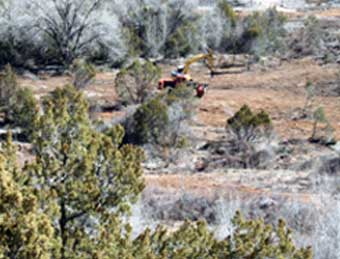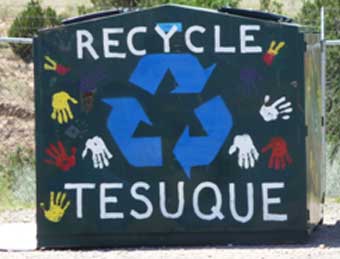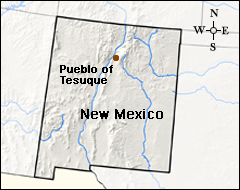Tribal Profiles
- Tribal Profiles
- Southwest Region
- Bidii Baby Foods
- Bishop Paiute Tribe
- Diné Native Plants Program
- Fort McDowell Yavapai Nation
- Hopi Earth Day
- ITEP’s SW Tribal Climate Change Project
- ITEP’s Academic Year Internship Program
- Jemez Pueblo Renewable Energy
- La Jolla Band of Luiseño Indians
- Mescalero Apache Tribe
- Native Seeds/Search
- Navajo Nation Dune Study
- North Leupp Family Farms
- Pueblo of Tesuque
- Pueblo de San Ildefonso Climate Action Plan
- Santa Ynez Band of Chumash Indians
- Tohono O’odham
- Ute Mountain Ute
- Wind River
- Tribal Profiles
- Southwest Region
- Bidii Baby Foods
- Bishop Paiute Tribe
- Diné Native Plants Program
- Fort McDowell Yavapai Nation
- Hopi Earth Day
- ITEP’s SW Tribal Climate Change Project
- ITEP’s Academic Year Internship Program
- Jemez Pueblo Renewable Energy
- La Jolla Band of Luiseño Indians
- Mescalero Apache Tribe
- Native Seeds/Search
- Navajo Nation Dune Study
- North Leupp Family Farms
- Pueblo of Tesuque
- Pueblo de San Ildefonso Climate Action Plan
- Santa Ynez Band of Chumash Indians
- Tohono O’odham
- Ute Mountain Ute
- Wind River

Pueblo of Tesuque
Water Scarcity and Fire Management in a Changing Environment
Click HERE for PDF version.
The Pueblo of Tesuque is located in the desert Southwest, approximately 10 miles north of Santa Fe, New Mexico. According to the Indian Pueblo Cultural Center, Tesuque Pueblo “is one of the most traditional of all of the Tewa speaking Pueblos, despite having been in contact with outside cultures throughout much of its history.”
The traditional Tesuque form of farming has long been hailed as a benchmark for sustainable agriculture in arid environments. Unfortunately, the climate change-induced decline in regional precipitation has made traditional farming more challenging for the Tesuque people.
Members of the Pueblo of Tesuque Environment Department have observed a decrease in precipitation in recent years. Specifically, staff members have identified a trend of delayed winter onset and decreased snowfall. The resulting decrease in surface water directly impacts agriculture for the tribe because historically crops have been irrigated using water from ponds and river diversions. Without sufficient surface water, tribal members cannot engage in traditional farming and the aquifer cannot recharge as needed.
In addition to ongoing concerns about surface water volume and access, the Pueblo of Tesuque Environment Department has to contend with regional fire hazards, which are predicted to intensify with climate change. In June 2011, the Pacheco Fire burned in the Santa Fe National Forest threatening Tesuque Pueblo property. According to the Pacific Northwest Research Institute, ecosystem simulation models project increased fire risk in the Western United States over the course of the 21st century. The increased risk is attributable to added fuel loading of woody vegetation in concert with drier summers. In light of these climate change-driven environmental concerns, the Pueblo of Tesuque Environment Department has turned its attention toward (1) watershed management and planning and (2) wildland restoration.
Watershed Management and Planning:
Project Implementation and Progress

Water is a precious and limited resource, particularly in the desert Southwest. Consequently, the Pueblo of Tesuque Environment Department has been hard at work to protect the quality and quantity of water resources around the pueblo. The watershed management and planning program is currently focusing its efforts on surface water monitoring and riparian restoration.
Completed tasks include:
- Surface water monitoring for chemical, physical and biological parameters – eight sites total, five on the Rio Tesuque, two on the Rio Chupadero and one on the Rio en Medio.
- Removal of invasive species, including Russian olive, siberian elm and saltcedar (also known as tamarisk), from riparian areas. Invasive species removal helps to ensure the continued health of the native ecosystem.
Wildland Restoration:
Project Implementation and Progress
Grassland and mixed conifer restoration projects on the Pueblo of Tesuque reduce the amount of fuel available to burn during wildland fires. The ultimate goal of these efforts is to prevent a catastrophic fire from taking place on restored lands and to improve the quality of habitat for native species including elk, quail and roadrunners.
Completed tasks include:
- Savannah grassland restoration – the Pueblo of Tesuque Environmental Department has been thinning pinon-juniper forests to improve the quality of grasslands.
- Wood recovered during grassland restoration efforts is donated to the community for firewood and for construction of community buildings.
- The tribe has secured funding from the Bureau of Indian Affairs for mixed conifer forest thinning.
- Tesuque tribal lands have become a refuge for wildlife such as elk. The US Fish and Wildlife Service has provided a 3-year grant to the Pueblo of Tesuque Environment Department for elk collaring to monitor elk movements.
The Tesuque Pueblo has completed a great deal of work to improve the local watershed quality, savannah grasslands and the surrounding forests. The tribe’s future goals include:
- Continue water quality monitoring and wildland restoration efforts.
- The Environment Department secured BIA Integrated Resource Management Planning funds to host community meetings and informational gatherings. The agency hopes that by doing so, they can learn what the community’s needs and subsequently work to create a master plan for the pueblo.

Challenges and Lessons Learned
In addition to project successes, there have been challenges and lessons learned. On a practical level, staff members from the Pueblo of Tesuque Environment Department explain that exotic species removal is demanding. Staff members are experimenting with different techniques, and some work better than others. They have learned that riparian restoration requires monitoring and regular visits following prescribed treatments.
With regard to watershed management, the tribe worries that rising temperatures will continue to reduce the amount of surface water available. Reduced surface water could, among other things, compromise federal funding for the tribe’s river water monitoring program.
The department’s response to these concerns has been to continually promote climate change adaptation as well as carbon mitigation practices. Senior Environmental Technician Ryan Swazo-Hinds pointed out the success of the tribe’s recycling program. He explained that while recycling decreases the tribe’s carbon footprint, more can be done, including the adoption of renewable energy. Swazo-Hinds stressed that ultimately, sustainability and adaptability are crucial for the long-term health of the environment and human populations. Conservation and cultural preservation, he explains, are complimentary – “keeping those practices and beliefs and thoughts alive is what’s needed.” Rather than pursuing climate change solutions in isolation, Swazo-Hinds emphasizes the importance of information sharing and collaboration. “I think that we all have the same goals in the end… to preserve what we have, preserve our culture, preserve our language.”
Key Partners
The Pueblo of Tesuque Environment Department has created many partnerships through their work on climate change-based initiatives. These partners include:
- US Environmental Protection Agency
- US Department of Interior – Bureau of Indian Affairs
- US Forest Service – Collaborative Forest Restoration Project
- US Fish and Wildlife Service
- US Department of Agriculture – Natural Resources Conservation Services
 About the Pueblo of Tesuque
About the Pueblo of Tesuque
The Tesuque people of New Mexico have a longstanding history of resourcefulness as evidenced by their traditional agricultural practices. Located in the foothills of the Sangre de Cristo Mountains, the Pueblo of Tesuque is home to approximately 800 inhabitants. The New Mexico Office of the State Historian states that despite the Pueblo of Tesuque’s close proximity to major city centers, including Santa Fe, residents have successfully maintained their culture and traditions intact. Indeed, according to the Indian Pueblo Cultural Center, the Pueblo of Tesuque constitutes &one of the most traditional of all of the Tewa speaking pueblos.” Farming and pottery production are the two primary occupations for residents of the pueblo.
References and Resources
- Indian Pueblo Cultural Center, Tesuque Pueblo
http://www.indianpueblo.org/19pueblos/tesuque.html - New Mexico Dept. of Tourism, Tesuque Pueblo
http://newmexico.org/nativeamerica/pueblos/tesuque.php - New Mexico Magazine, Tesuque Pueblo
http://www.nmmagazine.com/native_american/tesuque.php - New Mexico Office of the State Historian, Tesuque Pueblo.
http://www.newmexicohistory.org/filedetails.php?fileID=1353 - New Mexico Tourism Department, Tesuque Pueblo
http://newmexico.org/nativeamerica/pueblos/tesuque.php - Pacific Northwest Research Station – Western Forests, Fire Risk, and Climate Change
http://www.fs.fed.us/pnw/pubs/science-update-6.pdf - Pueblo of Tesuque Department of Education.2007.
http://www.tesuqueeducation.org/TPED/Home.html - Wotkyns, S. 2010. Tribal Climate Change Efforts in Arizona and New Mexico. Institute for Tribal Environmental Professionals, Northern Arizona University.
http://www4.nau.edu/itep/climatechange/docs/SWTCCEffortsAZNM_12-14-11.pdf
Project Contacts:
Pueblo of Tesuque Environment Department
Route 42 Box 360-T
Santa Fe, NM 87506
505-955-7741
Photos in this profile are courtesy of the Pueblo of Tesuque Environment Department.
This profile was developed by Cristina Gonzalez-Maddux, Institute for Tribal Environmental Professionals, Northern Arizona University, with financial support from the USDA Forest Service. The profile is available on the Tribal Wellbeing for Seven Generations Program website: https://itep.nau.edu/twsgp/tribes/. The tribal profiles featured on the website are intended to be a pathway to increasing knowledge among tribal and non-tribal organizations interested in learning about climate change mitigation and adaptation efforts.
CONNECT WITH US
Nikki Cooley
Co-Director
Nikki.Cooley@nau.edu
Karen Cozzetto
Manager
Karen.Cozzetto@nau.edu
Your tax deductible donation supports ITEP’s programming efforts.
Please contact us if you would like to contribute to our endowment or for any additional information regarding donations.

